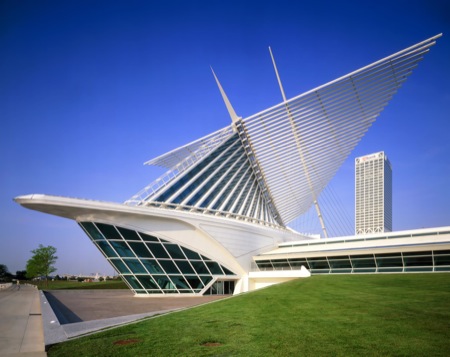
Midwestern museums rival those found anywhere across the nation. Collections span the centuries and delve into unique themes. The buildings themselves warrant tours highlighting their magnificent architecture and cutting-edge technology. Outside, gardens extend the beauty and beckon visitors to stop and absorb both nature and art.
Nelson-Atkins Museum of Art
Kansas City, Mo.
Since taking the helm one year ago, director Julian Zugazagoitia has brought increased energy to Kansas City’s Nelson-Atkins Museum of Art through innovative programming and technology.
The Nelson-Atkins maintains more than 33,500 works of art as one of the nation’s finest general art museums.
“The Asian collection is the foundation upon which the museum was built,” said Kathleen Leighton, communications and media relations officer for the museum. “Our senior curator of Chinese art, Colin Mackenzie, is an internationally respected scholar in Asian art.”
East of the original museum, the contemporary Bloch Building’s luminous buildings, or “lenses,” have received national and international accolades. Filled with natural light, the soaring walls play off one another, sometimes below ground and sometimes above.
The interior animates the notable post-1945 contemporary works, the acclaimed African art collection, and the rotating photography and art exhibitions. Mobile sculptures, called Shuttlecarts, transport visitors from one end of the building to the other.
Next year, an exhibit titled “Inventing the Modern World: Decorative Arts at the World’s Fairs, 1851-1939,” will present many objects seen for the first time in the United States. The 200 pieces were selected from thousands of decorative arts from around the globe. Each piece represents the pinnacle of scientific and artistic ingenuity.
“This exhibition has been in the works for many years, with one of our curators and a curator from Pittsburgh’s Carnegie Museum of Art,” said Leighton. “World’s fairs highlighted the innovative and looked to the future, so the pieces are extremely unique.”
Milwaukee Art Museum
In 2013, the Milwaukee Art Museum will celebrate 125 years with festivities and special exhibits. Opened as the Layton Art Gallery in 1888, it was a gift to the city from meatpacker Frederick Layton.
Today, the museum’s 25,000 works encompass painting, drawing, sculpture, decorative arts, prints, video art and textiles. The permanent collection’s strengths include American art, German Expressionist prints and paintings, and modern and contemporary art.
“People seek us out for our American folk art and Haitian art collections, which are some of the best in the country,” said Amy Kirschke, manager of adult programs for the museum.
The American collection presents one of the nation’s most important ensembles of pre-1900 decorative arts. Works on view include the earliest surviving American-made chair, Chinese export porcelain and American silver by Paul Revere.
“Our largest work of art is actually the Quadracci Pavilion,” said Kirschke. “The building looks like a magnificent ship or a bird perched on the shores of Lake Michigan.”
The pavilion is reminiscent of a postmodern cathedral, with its 90-foot-high glass ceiling and the Burke Brise Soleil, a movable sunscreen boasting a 217-foot wingspan. Designed by Spanish architect Santiago Calatrava, the sunshade perches atop the spine of the building, and opens and closes with museum hours. The building’s Reiman Bridge, a pedestrian suspension bridge, connects the museum to the city.










